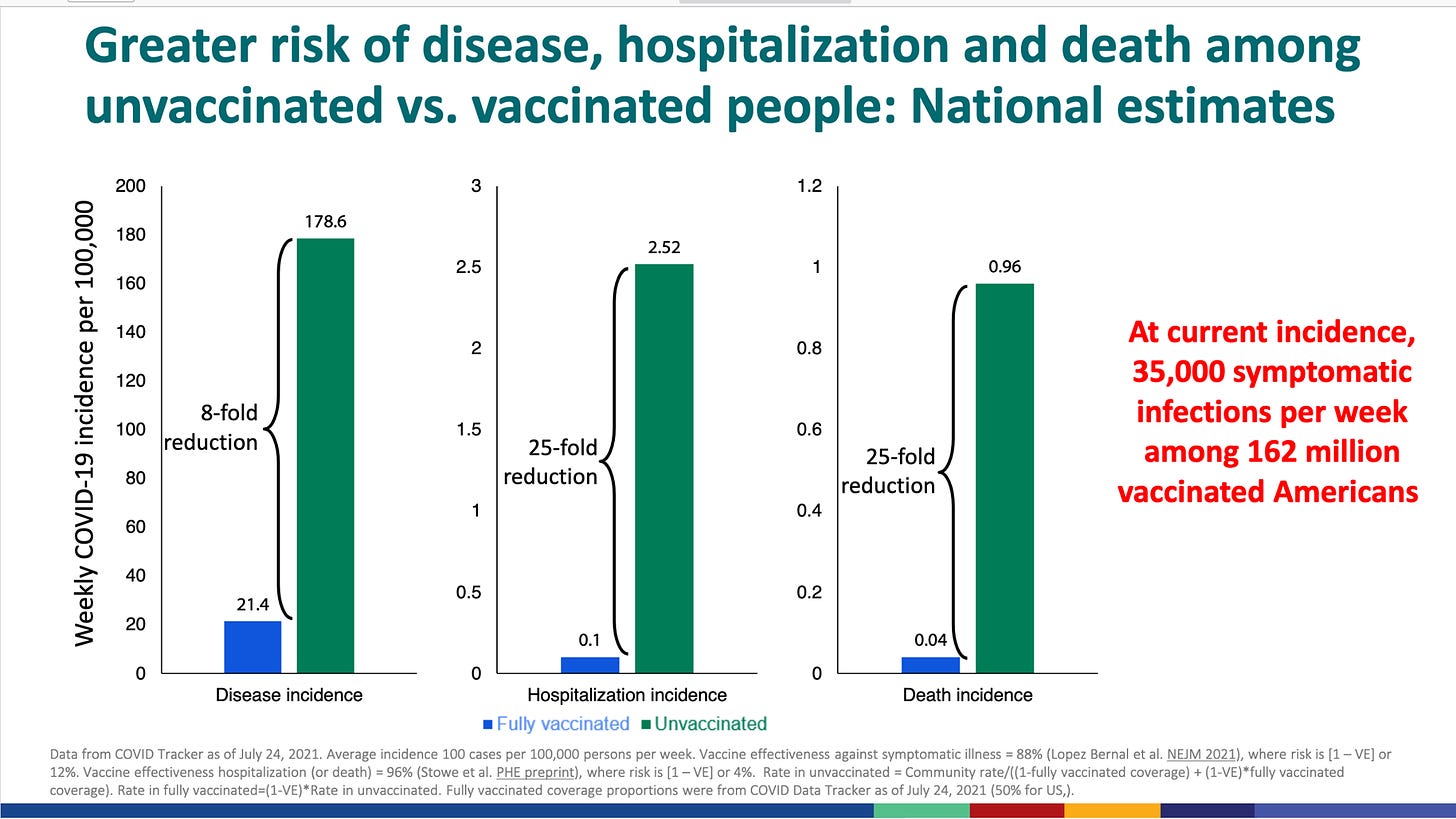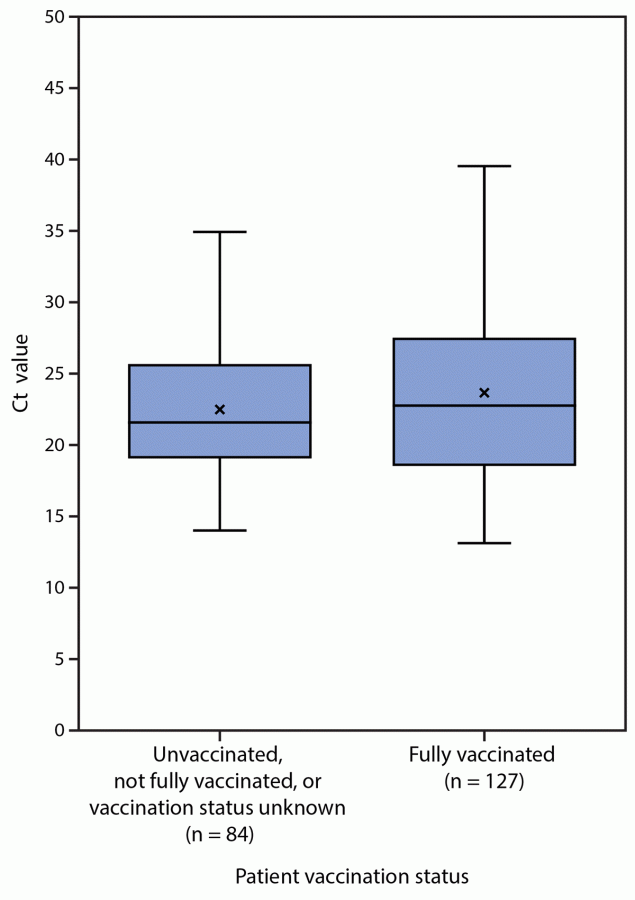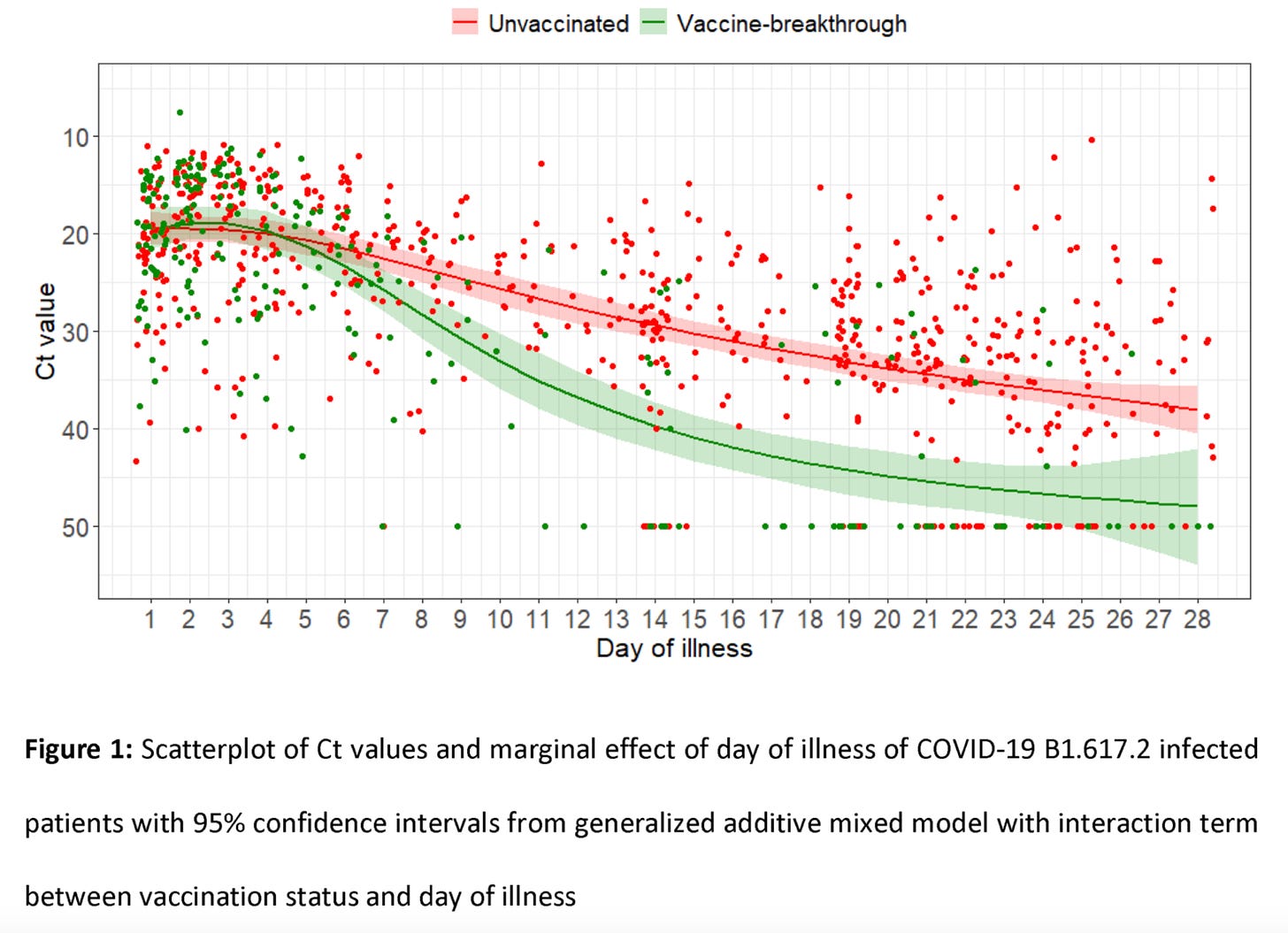There was a ton of new science that came out this week re: vaccine and Delta. This is where we are right now…
Efficacy against mild and moderate disease is reduced
We have been trying to nail down the “real world” efficacy of mRNA vaccines against Delta. This has proven to be difficult to do. As I wrote before, we’ve been getting mixed signals from the UK (showing an efficacy rate of 88%) and Israel (showing an efficacy rate of 64% at first, and 39% now).
Yesterday, the UK (Imperial College) released results from their ongoing study called UK REACT-1. Every month this team analyzes how vaccines continue to work against the virus. The latest data is now out. From 24 June to 12 July 2021, 98,233 volunteers in the UK were tested for COVID19. Among these people, 527 tested positive; all were Delta. After asking vaccination status, vaccine effectiveness was calculated. Vaccine effectiveness was 49% for any positive (asymptomatic and symptomatic) and 59% for symptomatic disease. In other words, vaccinated people had a 59% reduced risk of getting symptomatic COVID19 compared to unvaccinated.
So, the Israel numbers and the UK numbers are slowly agreeing: Delta significantly reduces effectiveness against symptomatic disease. No wonder we keep seeing more and more breakthrough cases in the United States.
Importantly, though, the vaccines continue to hold up for severe disease and death. At this point, this is nothing short of a miracle. The vaccine is saving a ton of lives right now.
Viral load among vaccinated is the same as unvaccinated
This week three studies (here, here, and here) came out showing that vaccinated have the same viral load as unvaccinated. This means vaccinated can spread the virus. This evidence slowly confirms the famous Massachusetts outbreak study which promoted the CDC to recommend masks again. One study (here) this week showed lower infectiousness among vaccinated, but not by much.
…at least in the first six day.
Another study from Singapore this week confirmed that the viral load among vaccinated is the same among the unvaccinated. However, and importantly, it looks like this is only the case in the first six days. Then the vaccine kicks in and there’s a far faster decline in viral load than among the unvaccinated (see graph). So, at first the vaccinated are as infectious as unvaccinated, but quickly differentiates over time. Vaccinated seem to not be infectious after 9 days (Ct=30) compared to unvaccinated at 16 days.
Bottom line: This confirms the higher rate of breakthrough cases than we anticipated. But the breakthrough cases continue to be far more mild than unvaccinated cases. Vaccinated also seem to carry the virus. So, wear those masks and remain vigilant. Especially if you have unvaccinated or vulnerable family at home.
Love, YLE








Thank you as always.
While obviously decreases in severe disease and mortality is significant and a great accomplishment it is still frustrating to have those be the metrics everyone always discusses. Long haul covid19 and damage to multiple systems is a serious issue as well (and in the long run will majorly impact our health care systems). It seems even the mild and asymptomatic cases among vaccinated can result in long covid. I am really worried about this for myself and my unvaccinated kids.
Should we be concerned that unvaccinated individuals are infectious for 16 days? That is much longer than the recommended 10 day quarantine. Thank you for all you do!!!